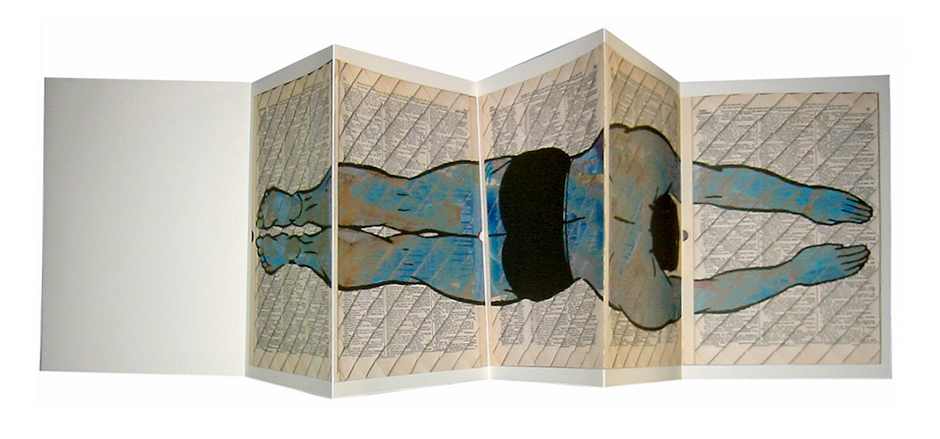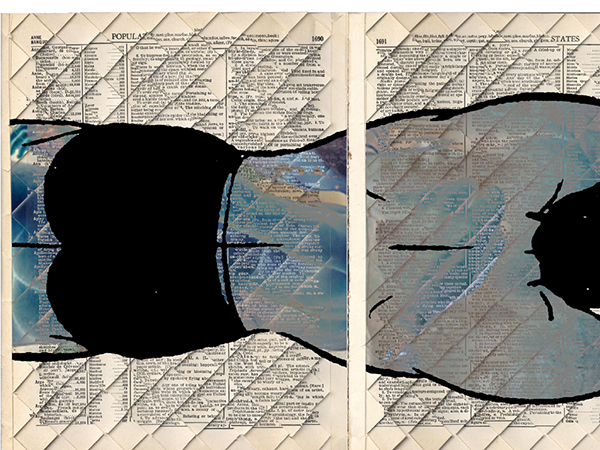The Swimmer
1999, 7 x 10 in., 6 pp.
accordion fold book
digital edition of 10
I spent the summer of 1999 at the International Studio Program located in TriBeCa on the top floor of a converted light industrial space. That summer was the hottest ever recorded for the city. My best friend told me about the Carmine Recreation Center, which was within walking distance of the studio and had a great outdoor pool, albeit a bit crowded with very aggressive swimmers (but that’s a different story).
One weekend I received an invitation from my friend Elizabeth, who is also a swimmer and lives in New Caanan, CT, to spend the night at her home to facilitate an early start the next day to view the Art of the Book collection at Yale in New Haven. We went for a swim that evening at the pool where she learned to swim as a kid. The pool was used in the 1950s movie “The Swimmer” starring Bert Lancaster, based on a short story by John Cheever about a man dealing with a midlife crisis who decides to swim the length of the county through the backyard pools over the course of a night. I remember seeing the film on TV a long time ago, but had forgotten most of what it was about.
The week after returning to New York the Times ran an article in the City section that was written by a guy who recreated “The Swimmer” by swimming all the public pools in Manhattan in the course of a day. The half-page photo above the fold illustrating the story was of the Carmine Street pool where I had been swimming.
The background image of The Swimmer is a digital scan of an unabridged edition of a Webster’s Universities Unabridged Dictionary* carved by hand with hammer and chisel into a pattern of pixels. The line image of the swimmer himself is taken from a 1960s instructional book entitled How to Swim. I saw the individual volumes/pages of cut text as the pools the swimmer passes through on his way to consciousness, or knowledge. The interior of the swimmer is filled with images downloaded from an internet newsgroup where exhibitionists post pictures of themselves. These images are layered and filtered to create the blue and gold tones of the swimmer’s skin. The combination of these images only occur digitally — there is no “original” in the sense of a solid, three dimensional book that was “reproduced” for this book.
[ Out of print ]
<-- Back to Table


